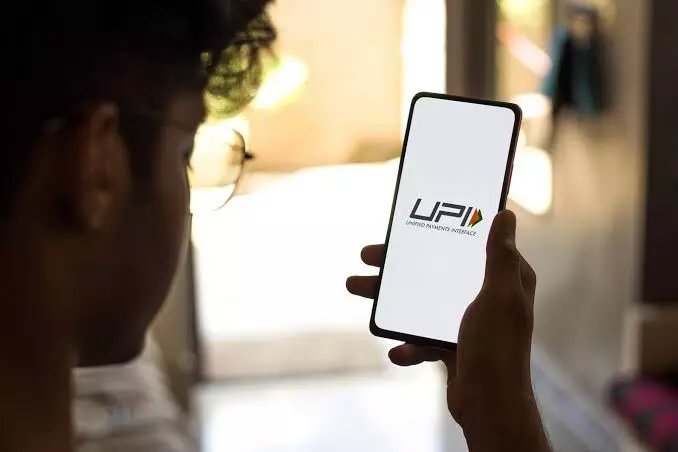Centre unveils 'Financial Fraud Risk Indicator' to help prevent digital payment fraud
Mobile numbers used in cyber frauds often remain active for only a short time
By Newsmeter Network
Representational Image
New Delhi: Department of Telecommunications (DoT) has introduced the `Financial Fraud Risk Indicator’ (FRI), a new intelligence-sharing mechanism developed through its Digital Intelligence Platform (DIP).
This tool aims to empower financial institutions with actionable insights to help prevent digital payment frauds. The FRI will alert stakeholders when a mobile number, flagged for potential fraud, is involved in a transaction, enabling them to implement extra validation checks.
What is the Financial Fraud Risk Indicator?
The FRI is a risk-based classification metric that assigns a financial fraud risk level—Medium, High, or Very High—to a mobile number. This assessment is based on a multi-dimensional analysis that pulls data from various sources, including:
Complaints reported on the National Cybercrime Reporting Portal (NCRP) under the Indian Cybercrime Coordination Centre (I4C),
The purpose of the FRI is to provide real-time, actionable intelligence that enables stakeholders—particularly banks, NBFCs, and UPI service providers—to take preemptive measures when dealing with high-risk mobile numbers.
Why is Advanced Risk Notification Important?
Mobile numbers used in cyber frauds often remain active for only a short time before they’re either discarded or disconnected. Because comprehensive verification processes can take time, receiving early warnings about suspicious numbers is critical.
The Digital Intelligence Unit (DIU) of the DoT already shares a Mobile Number Revocation List (MNRL)—a record of disconnected numbers and reasons for disconnection (e.g., cybercrime involvement, failed verification, or surpassing usage limits). These revoked numbers are frequently linked to fraudulent activities.
With FRI, the system accelerates this process. As soon as a mobile number is flagged by any stakeholder, it undergoes analysis and is immediately classified into one of the risk categories. This assessment is then instantly shared across all stakeholders through DIP.
Early Adoption and Impact
Digital payment platform PhonePe has been one of the early adopters of the FRI system. It has integrated FRI into its PhonePe Protect feature, declining transactions involving numbers marked as “Very High” risk and displaying warning alerts to users. Data from PhonePe shows that the tool is highly effective—most flagged numbers are later confirmed to be involved in fraud.
For numbers categorized as “Medium” risk, PhonePe is working to roll out pre-transaction warnings, allowing users to review and confirm the legitimacy of the recipient.
Industry-Wide Collaboration to Reduce Fraud
Other major UPI platforms—Paytm, Google Pay, and PhonePe, which collectively handle over 90% of UPI transactions—have started integrating DIP alerts into their systems. Some platforms are introducing features like transaction delays and requiring additional user confirmations when a high-risk number is detected.
Banks and other financial service providers are also leveraging this intelligence to proactively mitigate fraud risks.
With UPI emerging as India’s most widely used payment method, the introduction of FRI represents a vital step toward protecting millions of users. It enables a coordinated, data-driven approach to combating fraud in both telecom and financial ecosystems.
A Safer Digital Future
The DoT remains committed to preventing the misuse of telecom infrastructure by deploying national-level, technology-driven safeguards. Through continuous engagement with financial institutions and digital payment platforms, DoT aims to enhance alert systems, reduce response time, and make FRI integration a standard industry practice. This initiative is expected to build stronger resilience into India’s digital financial ecosystem, ensuring greater security for all users.